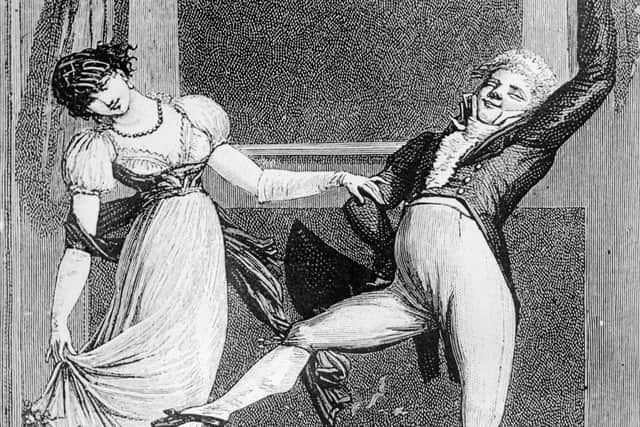Marianne Violante: The 18th century Italian acrobat who taught Presbyterian Edinburgh how to dance – Susan Morrison


Assembly Rooms became a crucial feature of the courting game, even here in the Presbyterian North. Edinburgh’s original one opened in the West Bow in 1710. It was a sort of Match.com for the moneyed classes. Boy would like to meet girl with fortune. Girl would probably like a title. Oh, and lurking at the edge of the dance floor, matchmaking matriarchs could monitor proceedings behind their fans, credit-checking prospective suitors.
Dancing, far from a temptation sent by Satan, was now a skill to be learned. Fortunately, in 1735, the right lady to teach Scotland how to minuet re-appeared in Edinburgh.
Advertisement
Hide AdAdvertisement
Hide AdHer name was Signora Violante and she was an Italian acrobat, actress and theatre troupe manager. She first appeared around 1720 in London. She was a dancer on the slack rope, considered more dangerous than the tightrope. She and her husband toured Europe, dazzling audiences with their daring feats.
At one point her husband performed at Southwark Fair. He was included in Hogarth's engraving. You can see him in the background, sliding face first down the rope. It’s pretty tame compared to his usual act. That involved blowing two trumpets and being followed by a donkey. On the rope.
That was just the warm-up for Signora Voilante, as she danced a minuet upon the rope whilst waving flags, with a child attached to each ankle. Well, good childcare is hard to come by and at least you’d always know where they were.
She first came to Edinburgh in 1730, but magistrates took a hairy fit when they heard about all this showing off on ropes and banned her act. She went to Dublin, which proved more amenable to a working mother, and set up her own theatre.
By 1735, she was about 53. I’m sure we can all agree, dancing on the slack rope is a young gal’s game. She returned to Edinburgh, hung up her stage gear, presumably stopped strapping her now-adult children to her ankles and re-invented herself as a dancing instructor to the gentry.
Lairds’ sons and merchants’ daughters were sent to Signora Violante to learn how to shine on the dancefloor. She even tought a few of the more progressive ministers of the Kirk, who regarded dancing as an exercise. Very Kirk o’ Scotland there. You’ll be cutting a rug, but you’ll only be doing it for your health, you understand.
She even did house calls. You could think of her as an 18th century personal trainer. She must have been good, because when she died in 1741, she was worth over £100. More than that, her stage clothes of fine velvets and gold thread were never sold off, even though they were worth a tidy sum.
The woman who stormed the stages of London, Dublin and Edinburgh was buried here. Until recently we didn’t even know her first name, but the incredible Dr Louise Yeoman found her burial record, and on it, her full name. Marianne Violante.
The woman who taught Edinburgh to dance.
Susan Morrison is presenter of BBC Radio Scotland's Time Travels
Comments
Want to join the conversation? Please or to comment on this article.
